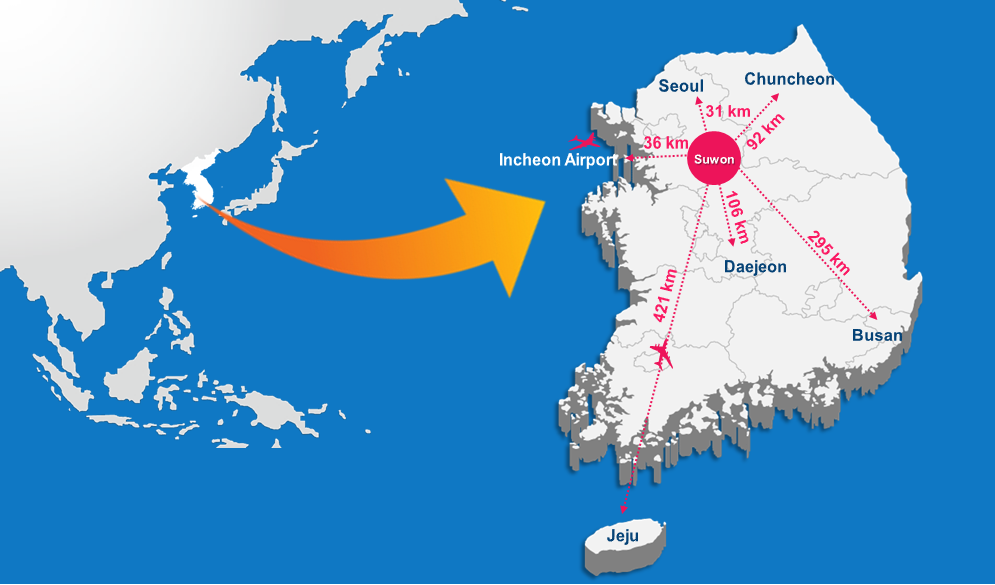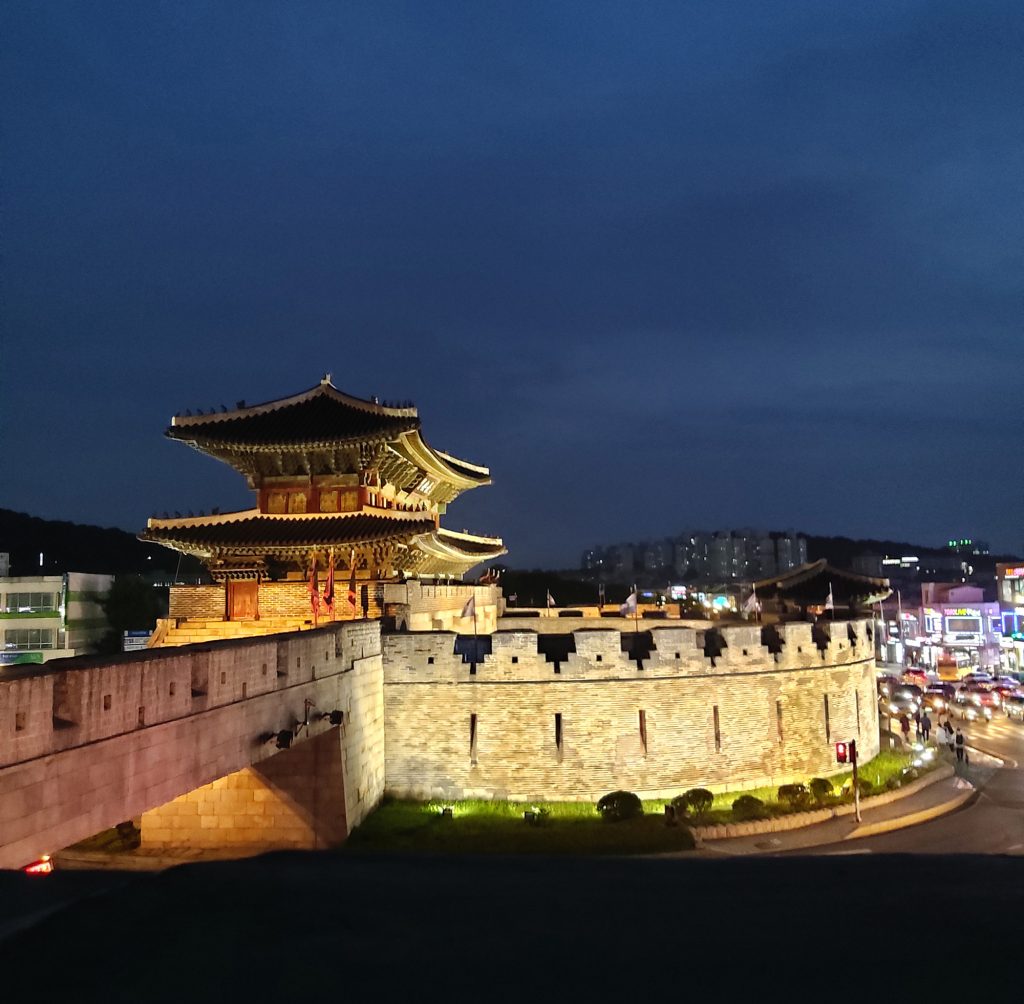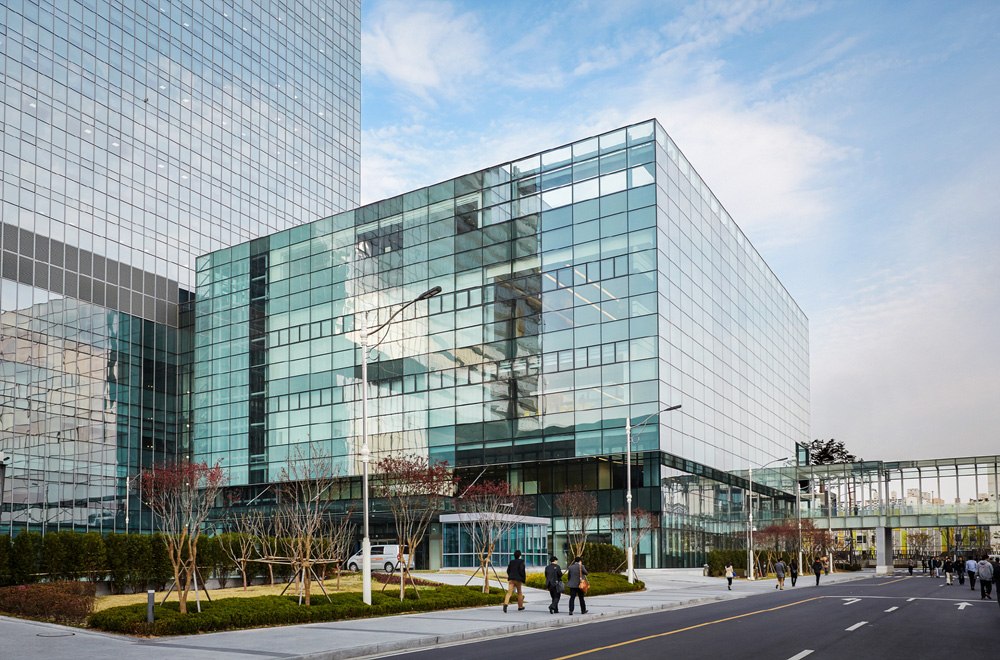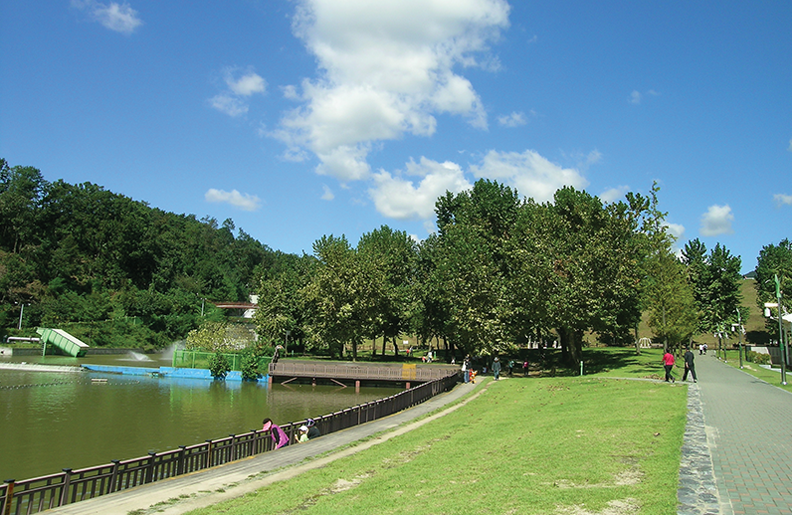About Suwon

Suwon is located 28 km away from Gangnam (the southern district of Han River), Seoul. It is one of the largest satellite cities near Seoul. There is an infrastructure of traffic networks connecting metropolitan cities across the country. You can take public transport to travel to Seoul, Incheon Airport, Daejeon and Busan. As a birthplace of Samsung Electronics, Suwon is an innovative city full of extraordinary traditions. There are Samsung Headquarter and digital R&D centers accommodating 10,000 employees in Suwon. Also, Suwon Convention Center (SCC), becomes the Suwon’s landmark harmonizing the state-of-the-art technologies and the nature on the basis of a splendid history and tradition.
The King Jeongjo intended to reform the Joseon Dynasty of Korea and make Suwon the nation’s capital 226 years ago. Part of this project was the construction of Hwaseong Fortress, a fortified wall running around the entire city. The massive walls, extending for nearly 6 km, still survive; they are pierced by four gates and equipped with bastions, artillery towers and other features. It was designated as a World Heritage site by UNESCO in 1997.
Suwon Hwaseong Fortress
The Suwon Hwaseong Fortress is a flat and mountainous fortress, which cannot be found in other neighboring countries like China and Japan. It was constructed for dual functions ― military defense and commercial functions. With its scientific, rational, and practical structures, it can be called the finest among the fortresses in Asia. The walls were piled up applying the method of ‘owechuknetak’ in which while outer walls were piled up, the inner sides were made by raising the grounds using the natural topographical features. Influenced by the silhak which literally meant practical studies, and was the scholastic and social movement in those days to try to find practical challenges in real life of people avoiding unrealistic philosophical controversies in neo-Confucianism, various kinds of advanced technology ― mixed use of bricks and stones; device of hyeonan, or flutes on the wall to pour hot water to enemy soldiers climbing the wall, and nujo, or gutter on the wall; creation of geojunggi, or crane; and wall-piling up with wood and bricks ― were actively applied in constructing the fortress. It can be regarded as a rare superb example of fortress construction technology of Asian fortresses. <Source from Suwon Cultural Foundation>

Soccer Museum

Suwon citizens are proud of having Suwon World Cup Stadium and a soccer club called Suwon Samsung Bluewings. The Stadium often referred to as Big Bird Stadium, was built to serve as a playing venue for the 2002 Korea/ Japan World Cup. It opened on 13 May 2001 with a capacity of 43,959 seats. During the 2002 World Cup, the stadium hosted three group matches and the round of 16 match between Spain and Republic of Ireland. Suwon World Cup Stadium’s roof was inspired by the wings of a bird in flight, whereas the seats were modelled after the city’s Hwaseong Fortress. The Soccer Museum is located inside the Stadium, which showcases the history of the world soccer as well as the history of the Korean soccer. Suwon World Cup Stadium is located toward the east of the city of Suwon, almost next to the Ajou University campus. More details, please visit the museum website.
Samsung Innovation Museum
Samsung Innovation Museum shows not only the history of the electronics industry but also the achievements of Samsung Electronics. In the IT industry Samsung has played a key role of leading semi-conductors, displays and mobile technologies. Our daily lives are improved as great inventors and innovative companies strive to develop new technologies and products for the global market. The invention of radio and television has extended to the mass media, communications and computing technology industries. The electronics industry paved the way for enlightening our civilization and narrowing the distance of the global life. There are three exhibition halls classified with three themes; Era of Inventors, Era of Corporate Innovation, and Era of Creation. At the end of the tour, it highlights their commitment to a prosperous future based on the value and importance of innovation. More details, please visit the museum website.

Gwanggyo Lake Park

The Gwanggyo Park is built under the theme of green park featuring water and wood, utilizing the Gwanggyo Reservoir and Gwanggyosan Mountain. The Park won the Grand Prize for the Korea’s Landscape Design Award in 2014. Most of the park facilities was built to preserve the existing lakes and forests. For this reason, Gwanggyo Lake Park has a more beautiful landscape than any other man-made parks. It is designed to consider nature oriented from beginning to end. Most of the major facilities are located near Woncheon Lake out of the two lakes. The highlight facility is Urban Levee, which becomes even more luminant at night. When LED lights on along the boardwalk, visitors can enjoy a fantastic nightscape across the lake. The Park is 1.3 km from Suwon Convention Center.
